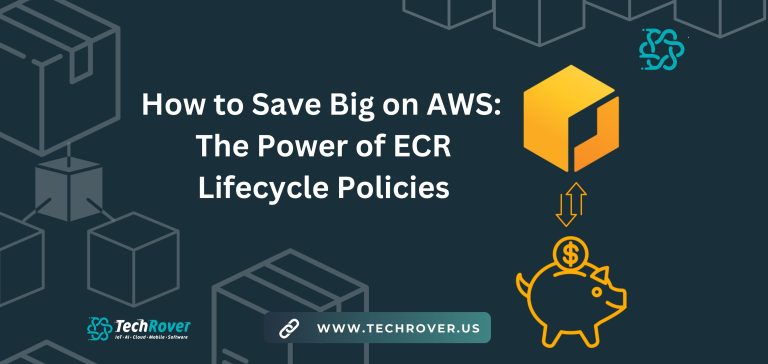How to Save Big on AWS: The Power of ECR Lifecycle Policies

Amazon Elastic Container Registry (ECR) is a fully managed container image storage service provided by AWS. It allows users to easily store, manage, and deploy Docker container images that are used in various containerized applications. While ECR simplifies container image management, one of the challenges faced by users is controlling storage costs as the repository grows over time. With the accumulation of images in a repository, the associated storage costs can increase significantly.
To help manage these costs, AWS offers ECR Lifecycle Policies, which automate the process of cleaning up old, unused, or unnecessary container images. By setting lifecycle policies, you can ensure that only the images required for active application deployment are retained, while older or less frequently used images are deleted automatically.
What Are AWS ECR Lifecycle Policies?
ECR Lifecycle Policies let you automatically manage image retention based on specific criteria like age or count, allowing you to:
- Reduce Costs by deleting old images.
- Simplify Management by automating retention.
- Improve Security by removing outdated, potentially vulnerable images.
How Lifecycle Policies Work
A lifecycle policy consists of JSON-based rules that define conditions for expiring images. These rules can be set based on image tags, age, or the number of images in the repository.
Monitoring and Fine-Tuning Policies:
To verify that your policies are effective, monitor your ECR storage usage over time. The “Billing and Cost Management” dashboard in the AWS console provides insights into your monthly ECR expenses, letting you gauge the impact of lifecycle policies. Additionally, AWS offers CloudWatch metrics to monitor the number of images and storage used, which can help you fine-tune policies for maximum savings.
Example of a Lifecycle Policy:
- Expire untagged images older than 30 days.
- Keep only the last 10 tagged images.
{
"rules": [
{
"rulePriority": 1,
"description": "Expire untagged images after 30 days",
"selection": {
"tagStatus": "untagged",
"countType": "sinceImagePushed",
"countUnit": "days",
"countNumber": 30
},
"action": {
"type": "expire"
}
},
{
"rulePriority": 2,
"description": "Keep last 10 tagged images",
"selection": {
"tagStatus": "tagged",
"countType": "imageCountMoreThan",
"countNumber": 10
},
"action": {
"type": "expire"
}
}
]
}
Best Practices for ECR Lifecycle Policies
- Set Rules for Untagged Images: These often accumulate quickly, so consider expiring them after a short period (e.g., 30 days).
- Limit Tagged Image Retention: Keep only the latest versions to save space and reduce costs.
- Review Regularly: Periodically adjust policies based on your usage and storage needs.
Techrover™ Solutions Success Story
At Techrover™ Solutions, implementing a lifecycle policy for AWS Elastic Container Registry (ECR) significantly reduced storage costs. By automatically deleting non-production images and retaining only the latest tagged and untagged images, we achieved substantial cost savings.
This optimization demonstrates the importance of efficient resource management in reducing cloud infrastructure expenses.

Learn More About AWS ECR Lifecycle Policies
To get started with lifecycle policies, refer to these AWS resources:
- Lifecycle Policy Examples: AWS ECR Lifecycle Policy examples
- Writing Rules: How to write lifecycle rules
- Expiring an Image: Expiring images with lifecycle policies
- Multi-Rule Policy Application: Learn how multiple rules are applied to repositories
AWS ECR Lifecycle Policies provide an efficient way to manage container image storage by automating the deletion of unused or outdated images. By setting rules based on image age, tags, or number of images, you can ensure that only the most relevant images are retained, reducing unnecessary storage costs. These policies eliminate the need for manual image management, saving time and effort. With automated cleanup, you can avoid repository clutter, optimize storage usage, and keep your container images organized. Implementing these policies not only improves cost efficiency but also helps maintain a streamlined and well-managed repository, enhancing overall productivity.



Pingback: REST API Vs. GraphQL: Empower Your Development With The Right Tool | 7